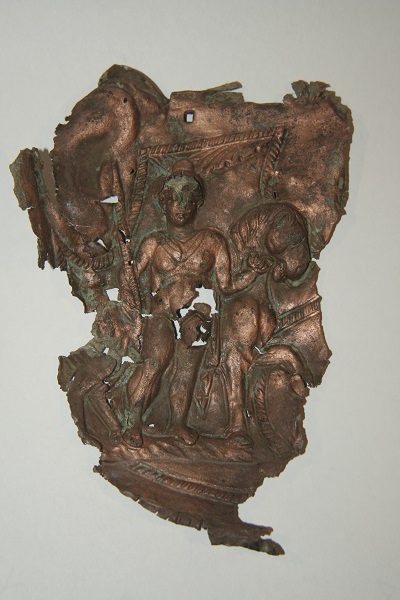Object of the Month April 2021 - The Scold's Bridle
This was a form of torture or public humiliation for women who were considered to be gossips or nags. They were known as ‘Scolds’. The framework enclosed the head and the iron bit slid into the mouth on top of the tongue, stopping the wearer from speaking.
They were sometimes called a witch's bridle, a brank's bridle, or simply branks and were used as an instrument of punishment, as a form of torture and public humiliation. The bridle-bit (or curb-plate), about 2 in × 1 in (5.1 cm × 2.5 cm) in size, was slid into the mouth and either pressed down on top of the tongue as a compress, or used to raise the tongue to lie flat on the wearer's palate. This prevented speaking and resulted in many unpleasant side effects for the wearer, including excessive salivation and fatigue in the mouth.
When the bridle was placed on the supposed gossiper's head, they could be led through town to show that they had committed an offence or scolded too often. This was intended to humiliate them into ‘repenting’ their ‘riotous’ actions. A spike inside the gag prevented any talking since any movement of the mouth could cause a severe piercing of the tongue. When wearing the device, it was impossible for the person either to eat or speak.
Object of the Month January 2022 - Copper Cheek Piece
Originally attached to a Roman Cavalry Helmet - Discovered at Brough (Crococolana)

Today the image you might have of the Roman army is of Legionary foot soldiers, armed with pilums (spears), a gladius (sword) and rectangular shield. However, Roman Auxiliary Cavalry would have been a very different sight, particularly when wearing ‘parade’ helmets, which were meant to impress.
This is the right hand cheek piece from what would have been an impressive helmet, an image of a complete Roman Cavalry Helmet can be found here. It was found at the fortified Roman town of Crococolana, now Brough. This was situated on the Fosse Way, the Roman road that joined Exeter in the south west to Lincoln. It is 3 ½ miles from what is now Newark and 14 miles from the major town of Lindum Colonia, modern Lincoln. By around 70 AD the East Midlands had been taken under Roman control and the army had moved north. So, what a cavalry helmet was doing here, we have no idea!
The cheek piece has an image of a figure holding a spear in one hand and the reins of his horse in the other. This has been interpreted as being either Castor or Pollux, known as the heavenly twins and brothers of Helen of Troy, who were the patron gods of the Roman cavalry. Although Greek in origin Castor and Pollux were adopted by the Romans who thought that the twins aided them on the battlefield.
The cavalry were one of the least important parts of the Roman army and by the 2nd Century AD consisted almost entirely of 'auxiliaries', free provincial subjects of the empire who were not citizens. They would have come from all over the conquered Roman Empire, including North Africa, France, Germany and Hungary.
The cheek piece has been compared with other Roman Cavalry Parade helmets, particularly that found at Hallaton, as part of the Hallaton Hoard, and now displayed in Harborough Museum.
